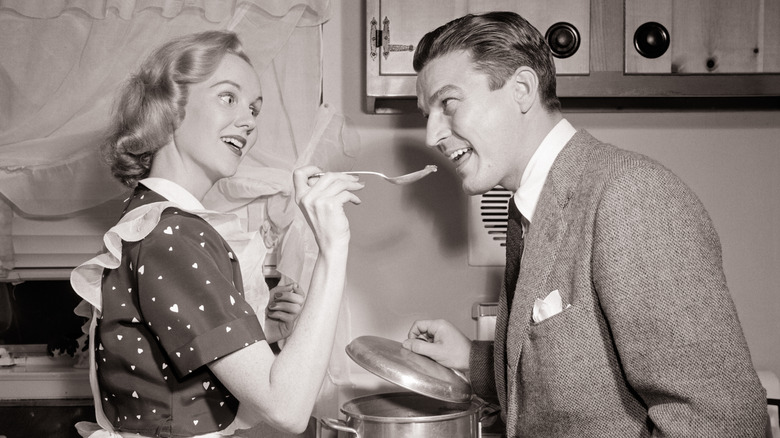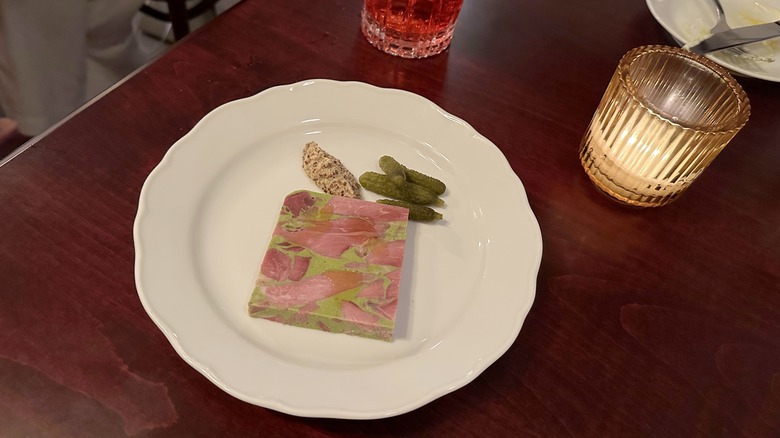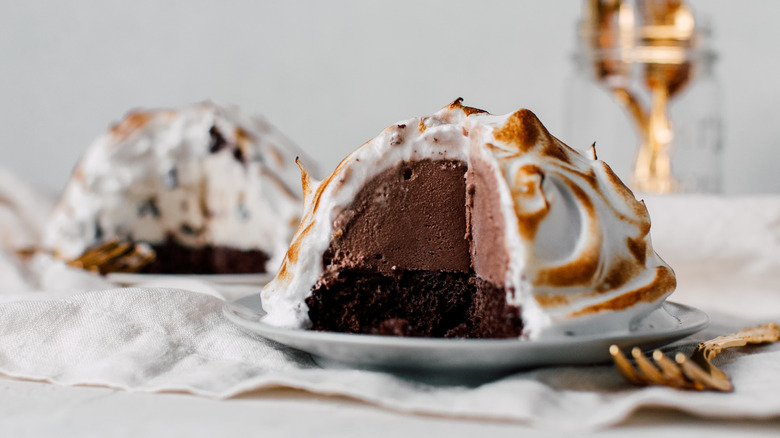A 1950s Food Revival Is On The Horizon
The 1950s is an era whose cuisine is looked at on a sliding scale of nostalgia to horror. Known for its Jell-O molds and casseroles, questionably-named "salads," and TV dinners, the 1950s marked a period of time when Americans viewed convenience as the ultimate benchmark of luxury when it came to dining. A booming economy and the exaltation of the nuclear family led to homemakers who measured their social status in conspicuous consumption, with the purchase of the latest stand mixer or dishwasher a mark of pride on the household.
The post-war era meant changes in technology and intercultural exchanges that changed the way food looked, ushering in a fondness for processed and pre-packaged foods like Spam and Kraft Singles. In years since, many of these foods have gone out of style, but a lot of items that were once lost to your grandmother's cookbook collection have made an unexpected resurgence. Favorite 50s recipes like deviled eggs, aspic, meatloaf, and even Baked Alaska have discovered a newfound popularity, despite all odds.
Say hello to Jell-O
Deviled eggs, once a staple of banal neighborhood potlucks, have had a glow up, appearing in upscale restaurants like Agi's Counter as star players. A single halved deviled egg at Agi's, where they are called "Green Devils," goes for a minimum of $5 a pop, plus more if you want to add anchovies or hot sauce.
Aspic, a savory meat jelly also popular in the 50s, has also snuck its way onto many menus, including the hot new NYC French restaurant Libertine, as Jambon Persillé. Sure, the name is different, but chunks of pink ham in green jelly are pretty hard to misinterpret. Now, jellies have long been part and parcel of fine dining, as their aesthetic potential is vast, but these fresh aspic creations seem designed to elicit a kind of grotesque fascination. It feels like the kind of thing you would order to prove that you have good taste and can handle a little textural confusion, like oysters or foie gras.
Even meatloaf has made its way back onto our radar as "recession core" food trends hit the shelves, encouraging diners to think lean. In fact, this balance between affordable nostalgia and glamorous historical recreations might be the secret sauce luring diners of all stripes back to the mid-century culinary landscape.
The recent rise of 50s desserts
Even popular 50s desserts are back in style, like Baked Alaska, which was invented in the late 19th century, but became popular in the 1950s when commercial kitchen appliances made daunting culinary attempts like this one accessible for anyone with a stand mixer, a freezer, and a kitchen blow torch. The triple flavored Baked Alaska at Gage & Tollner in downtown Brooklyn, an old recipe at an older restaurant, sparked a lot of food media interest over the last year, likely because this dessert is both delicious and perfectly made for a dazzling TikTok.
Baked Alaska, alongside other desserts inspired by the era like a Bananas Foster Crème Brûlée and the Peach Melba, can also be found at the Press Club Grill, a new Midtown NYC restaurant that has designed its entire style on the 1950s, with a full 50s-inspired menu and an interior that looks set for Don Draper to swagger into at any minute.
"1950s-inspired food at restaurants is having a moment right now and can be attributed to several factors including nostalgia, a desire for comfort, and a fascination with simpler times from that era," the Press Club Grill's Chef and Owner Franklin Becker told Food Republic. "The 1950s was all about progressive change in America, where there was a lot of hope for the future. When the pandemic hit people were feeling homesick and longing for that feeling of hope and comfort. These nostalgic foods provide that and remind people of their parents' or grandparents' generation and the food they enjoyed."



